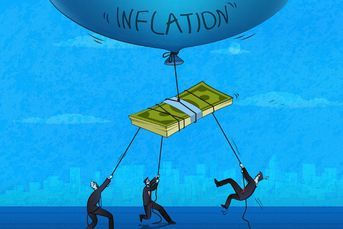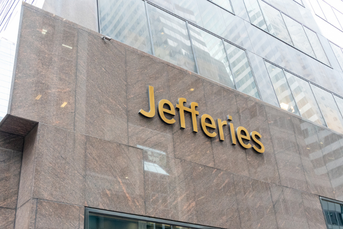ETF alphabet soup obscures market risks
Industry executives call for clearer classification of exchange-traded products after the XIV ETN plummeted last week.
What’s in a name? When it comes to exchange-traded funds, the answer could mean the difference between surviving a volatile market and getting wiped out.
ETFs have tripled their assets to $3.4 trillion over the last six years, capitalizing on demand for cheaper alternatives to mutual funds during one of the longest bull runs in U.S. stocks in history. But along the way, the meaning of those three letters has blurred, lumping together simple portfolios that track the S&P 500 Index with complex combinations of securities that promise to deliver, say, three times the move in the price of oil.
And all of this has left some investors with little idea of what they own and little understanding of how these products will perform under stress.
This concern came into focus last week when XIV, a $1.9 billion exchange-traded note that bets on market calm, lost 90% of its value in a day. While XIV’s prospectus spelled out the risks — that it was a debt obligation, that it could shutter at any time and that its value could and would fall toward zero — less-sophisticated investors saw it as just another ”ETF.”
“It’s like alphabet soup, confusing as hell,” said Eric Balchunas, an ETF analyst at Bloomberg Intelligence. “XIV taught at least some investors the difference between an ETF and an ETN.”
Defining Terms
You can understand the confusion. Exchange-traded products — a catch-all term for these securities — mostly trade under three- or four-letter tickers and can be bought and sold at any time, just like stocks. Collectively, they’ve become a core part of many portfolios, offering access to everything from Chinese equities to real estate investment trusts to gold.
And yet, in many ways they’re market mysteries because of the different rules governing each product. Some retail investors confess that the first time they heard the acronym ”ETN” was after they’d lost thousands of dollars on one. There are $24 billion of ETNs that trade in the U.S. under similar terms as XIV, data compiled by Bloomberg show.https://www.investmentnews.com/wp-content/uploads/assets/graphics src=”/wp-content/uploads2018/02/CI114342215.PNG”
Unlike ETFs, ETNs are debt instruments that are backed by their issuers — typically a bank — rather than a pool of assets and often focus on esoteric strategies that don’t easily fit in a fund. In XIV’s case, Credit Suisse Group was the issuer and, under the terms of its offering documents, the bank could accelerate and redeem the note at will.
That’s why XIV is closing. Meanwhile, it’s business as usual for a rival product. The ProShares Short VIX Short-Term Futures ETP, which goes by the ticker SVXY and deploys a similar investment strategy, is still trading despite losing 90% of its value over the last two weeks. Why? Because it’s not a note and therefore operates under different rules.
Risk Profiles
So it’s ETNs versus ETFs, right? Not necessarily. SVXY could also be described as an exchange-traded commodity, or ETC, because it owns futures and is structured as a commodity pool. That category would include products that buy oil futures or soy beans — but perversely not those backed by a vault of gold. Physical metals are dealt with separately.
And the thing is, all of these different products carry different risk profiles. A portfolio of highly liquid stocks is distinct from a pool of commodities or an index of esoteric securities combined into a single note by a bank. However, to many investors they all fall under the seemingly safe rubric of ETFs.
“Investment products should behave the way an investor intuitively understands they’ll behave,” said Martin Small, head of BlackRock Inc.’s U.S. ETF business, iShares. “There are some critical differences and by using one moniker, like just ‘ETF,’ it doesn’t actually provide adequate navigation capability.”
New Names
Many critics are now keen to refine the term ETF.
BlackRock’s Mr. Small encourages differentiating between funds that are approved by the Securities and Exchange Commission prior to launch, and commodity-backed products or notes, which are overseen by the Commodity Futures Trading Commission or banking regulators. The world’s largest ETF issuer, however, doesn’t run any U.S. ETNs, ETCs or leveraged ETPs — products it wants to rechristen ”exchange-traded instruments.”
Others, like Dublin, Ohio-based ETP Resources, advocate for a system based on how a product was listed. Under this model, ETFs would splinter into index fund shares (those that track a benchmark), managed fund shares (those that are actively managed) or even, like the SPDR S&P 500 ETF Trust, portfolio depositary receipts.
All of this may sound like a late-night argument for market nerds, but the differences matter significantly to ordinary investors. Unlike most ETFs, for example, SPY is not overseen by a board and does not have a portfolio manager. There are 10 different types of ETP securities now trading in the U.S., not including ETNs, according to ETP Resources, a data provider run by Jim Simpson, a former associate director of the ETF marketplace at the American Stock Exchange. All of these products have their idiosyncrasies.
Regulatory Watershed
Ultimately, though, regulators will make the call on where the divisions lie.
While the SEC only approves funds structured under the Investment Company Act of 1940, its division of corporation finance oversees the disclosure of other ETPs, and its trading and markets division oversees listings. That gives it some control over the amount and type of information that wannabe investors receive.
But in the wake of XIV’s disintegration, many investors are wondering if there should be further clarification of what these products actually are and what risks they carry beyond “buyer beware.”
“The extraordinary and sudden loss of value of XIV will almost certainly focus the attention of regulators,” said Barry Pershkow, a partner at Chapman & Cutler who worked as a special senior counsel focused on ETFs at the SEC until October. They “will be thinking not only about how specific types of ETPs operate, but perhaps also about the way the whole ETP ecosystem is organized.”
Learn more about reprints and licensing for this article.








